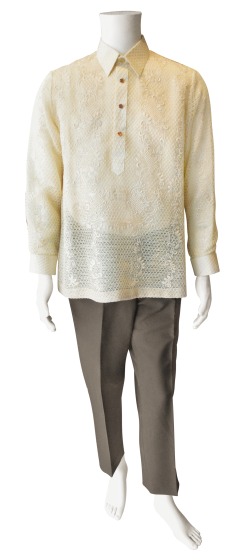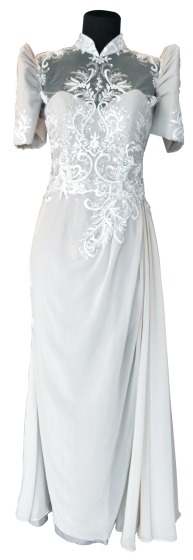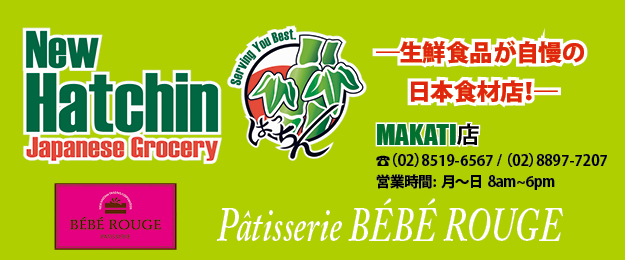フィリピンでは特別な日には正装として民族衣装を着る。フィリピン人としてのアイデンティティーを表現する代表的な伝統服、バロン・タガログとフィリピニャーナにはどのような背景があるのだろうか。
シースルーには訳がある。
バロン・タガログ
フィリピンの政治家が着ているのをテレビなどでよく見るバロン・タガログ。1953年、ラモン・マグサイサイ第7代大統領がバロン・タガログを着て就任式に臨んだのをきっかけに男性の正装として人気が高まり、マルコス大統領はバロン・タガログが国民に広く着用されるように1975年5月に「バロン・フィリピノ週間」を制定した。
バロン・タガログは「タガログ人の衣服」を意味する。その歴史は、スペイン統治時代以前、フィリピンの原住民が着ていたカンガと呼ばれる綿でできた上半身を覆う服にさかのぼる。スペイン統治下でその上着は内側が透けて見えるシースルーで、ポケットがないデザインとなった。それはフィリピン人に武器を隠し持たせないようにするためであり、その歴史が今もバロン・タガログのデザインに受け継がれている。そうした植民地時代の名残をとどめる一方、スペイン統治時代にも襟の大きさなどスタイルは進化し続けた。こうした歴史から、植民地支配への抵抗とフィリピン独立と自由のシンボルともされているのがユニーク。
バロン・タガログの生地には、パイナップルの葉の繊維で作る希少素材で高価な「ピーニャ」をはじめ、絹、アバカ(マニラ麻)、そして最も手頃な価格のポリエステルなどがある。
1着持っていれば、蒸し暑い日本の夏にも活躍しそうなバロン・タガログである。

バロン・タガログ Barong Tagalog
伝統的なシースルーのバロン・タガログのほか、 透けないものもある。
時代とともにエレガントに進化
フィリピニャーナ
フィリピンの男性の正装バロン・タガログに対し、女性の正装はフィリピニャーナと呼ばれる。フィリピニャーナは女性民族服の総称で、主な種類にバロト・サヤ、マリア・クララ、そしてテルノがある。
バロト・サヤは、バロトがブラウス、サヤがスカートという意味。元々パイナップルの繊維から作られた18〜19世紀のフィリピン人女性の服装を原型に、スペイン統治の間にスカートは大きく、袖は短くなった。そして、1890年代にバロト・サヤが進化して生まれたのがマリア・クララ。イエス・キリストの母マリアの像の服をモチーフに、ショール(パヌエロ)とタピスという布でできた厚手のスカートからなる。マリア・クララという名前は、英雄ホセ・リサールの著作『ノリ・メ・タンゲレ』(ラテン語で 「私に触れるな」の意味)のヒロインに由来する。
1920年代にはテルノと呼ばれるパイナップル繊維のピーニャを素材にした足首までの長さがあるワンピースドレスが登場。テルノ(terno)とは、スペイン語でto match、同じ生地でつくられたひとそろいの服の意味。バタフライ・スリーブと呼ばれる蝶の羽根を思わせる大きな袖と、華やかな刺繡が施されたテルノはエレガントで美しい。ベトナムでアオザイ、香港でチャイナドレス(チーパオ、チョンサム)がお土産としても人気なように、フィリピン滞在の記念にオーダーメイドのテルノはいかがだろう。

テルノTerno
History of The Barong Tagalog and Filipiniana
On special occasions, Filipino people get dressed in traditional clothing. Let’s take a look back at the history of the Barong Tagalog and Filipiniana.
Freedom and Pride
Barong Tagalog
The Barong Tagalog originated from the double sleeve-doublet made from cotton called canga which the Filipino natives wore before the Spanish occupation. It is believed that the Spanish changed the design of the upper garment of the Filipino males, making it a see-through outfit without pockets, to prevent them from hiding weapons. While the forced design made by the Spanish colonizers still remains in the present Barong Tagalog, it is also recognized as the symbol of Filipino independence and resistance to colonization as Filipino people redesigned the Barong Tagalog, the size of collar etc. during the Spanish occupation.
Gracefully Evolved with the Times
Filipiniana
Philippines’ national attire for women is called Filipiniana. It’s a general term that spans different types of female dress such as Baro’t Saya, Maria Clara and Terno.
Baro’t Saya, which dates back to the 18th-19th century, consists of a baro, blouse, and a saya, skirt. During the Spanish colonial era, the sleeves became shorter and the skirt became bigger. In the 1890s, Maria Clara was developed from Baro’t Saya with inspiration from the costume of the Virgin Mary statue. It features a shawl called the pañuelo, and an overskirt made of tapis fabric. Maria Clara was named after the heroine of the novel “Noli Me Tangere” by Jose Rizal. In the 1920s, Terno, a long single piece dress with butterfly sleeves, emerged. The name means “to match” in Spanish.















